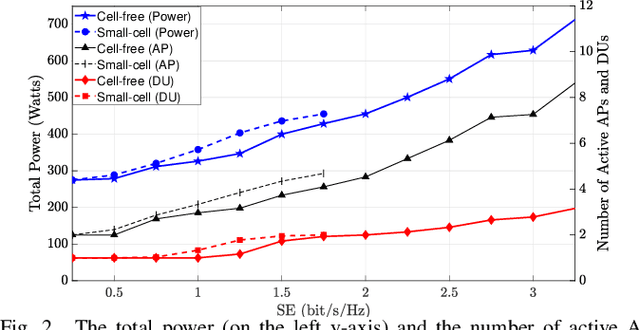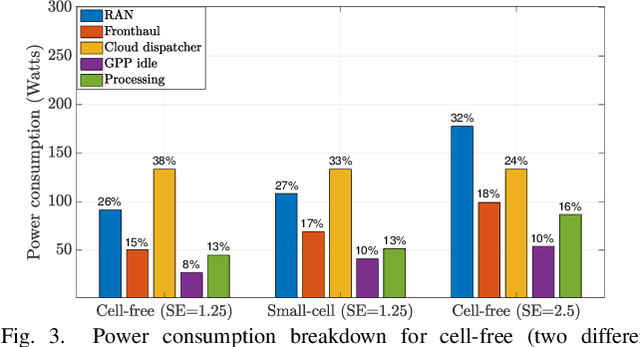Meysam Masoudi
Telecom Foundation Models: Applications, Challenges, and Future Trends
Aug 02, 2024Abstract:Telecom networks are becoming increasingly complex, with diversified deployment scenarios, multi-standards, and multi-vendor support. The intricate nature of the telecom network ecosystem presents challenges to effectively manage, operate, and optimize networks. To address these hurdles, Artificial Intelligence (AI) has been widely adopted to solve different tasks in telecom networks. However, these conventional AI models are often designed for specific tasks, rely on extensive and costly-to-collect labeled data that require specialized telecom expertise for development and maintenance. The AI models usually fail to generalize and support diverse deployment scenarios and applications. In contrast, Foundation Models (FMs) show effective generalization capabilities in various domains in language, vision, and decision-making tasks. FMs can be trained on multiple data modalities generated from the telecom ecosystem and leverage specialized domain knowledge. Moreover, FMs can be fine-tuned to solve numerous specialized tasks with minimal task-specific labeled data and, in some instances, are able to leverage context to solve previously unseen problems. At the dawn of 6G, this paper investigates the potential opportunities of using FMs to shape the future of telecom technologies and standards. In particular, the paper outlines a conceptual process for developing Telecom FMs (TFMs) and discusses emerging opportunities for orchestrating specialized TFMs for network configuration, operation, and maintenance. Finally, the paper discusses the limitations and challenges of developing and deploying TFMs.
Energy Harvesting Maximization for Reconfigurable Intelligent Surfaces Using Amplitude Measurements
Nov 06, 2023Abstract:Energy harvesting can enable a reconfigurable intelligent surface (RIS) to self-sustain its operations without relying on external power sources. In this paper, we consider the problem of energy harvesting for RISs in the absence of coordination with the ambient RF source. We propose a series of sequential phase-alignment algorithms that maximize the received power based on only power measurements. We prove the convergence of the proposed algorithm to the optimal value for the noiseless scenario. However, for the noisy scenario, we propose a linear least squares estimator. We prove that within the class of linear estimators, the optimal set of measurement phases are equally-spaced phases. To evaluate the performance of the proposed method, we introduce a random phase update algorithm as a benchmark. Our simulation results show that the proposed algorithms outperform the random phase update method in terms of achieved power after convergence while requiring fewer measurements per phase update. Using simulations, we show that in a noiseless scenario with a discrete set of possible phase shifts for the RIS elements, the proposed method is sub-optimal, achieving a higher value than the random algorithm but not exactly the maximum feasible value that we obtained by exhaustive search.
Amplitude-Based Sequential Optimization of Energy Harvesting with Reconfigurable Intelligent Surfaces
Jul 21, 2023Abstract:Reconfigurable Intelligent Surfaces (RISs) have gained immense popularity in recent years because of their ability to improve wireless coverage and their flexibility to adapt to the changes in a wireless environment. These advantages are due to RISs' ability to control and manipulate radio frequency (RF) wave propagation. RISs may be deployed in inaccessible locations where it is difficult or expensive to connect to the power grid. Energy harvesting can enable the RIS to self-sustain its operations without relying on external power sources. In this paper, we consider the problem of energy harvesting for RISs in the absence of coordination with the ambient RF source. We consider both direct and indirect energy harvesting scenarios and show that the same mathematical model applies to them. We propose a sequential phase-alignment algorithm that maximizes the received power based on only power measurements. We prove the convergence of the proposed algorithm to the optimal value under specific circumstances. Our simulation results show that the proposed algorithm converges to the optimal solution in a few iterations and outperforms the random phase update method in terms of the number of required measurements.
Cell-Free Massive MIMO in O-RAN: Energy-Aware Joint Orchestration of Cloud, Fronthaul, and Radio Resources
Jan 15, 2023



Abstract:The physical-layer foundations of cell-free massive MIMO are now well-established. The end-to-end network (from radio site to the cloud) analysis and energy-efficient operation are two critical factors to be considered for the deployment of cell-free massive MIMO functionality in a practical wireless network architecture. In line with the cloudification and virtualization in the open radio access networks (O-RAN), it is indisputable to envision prospective cell-free infrastructure on top of the O-RAN architecture. O-RAN is the key enabler for the end-to-end management of cell-free massive MIMO. In this paper, we explore the performance and power consumption of different radio technologies, i.e., cell-free massive MIMO and traditional small-cell systems, in the virtualized O-RAN architecture from an end-to-end perspective. We compare two different functional split options and different resource orchestration mechanisms, including the fully virtualized end-to-end, local cloud coordination-based, and radio-only resource allocation. In the end-to-end orchestration scheme, we aim to minimize the end-to-end power consumption by jointly allocating the radio, optical fronthaul, and virtualized cloud processing resources. We compare end-to-end orchestration with two other schemes: i)``radio-only'' where radio resources are optimized independently from the cloud and ii)``local cloud coordination'' where orchestration is only allowed among a local cluster of radio units. The spectral efficiency (SE) is either considered as an optimization constraint for each user equipment or as a sum SE in the objective function. We develop several algorithms to solve the respective end-to-end optimization problems.
Cell-Free Massive MIMO in Virtualized CRAN: How to Minimize the Total Network Power?
Feb 18, 2022



Abstract:Previous works on cell-free massive MIMO mostly consider physical-layer and fronthaul transport aspects. How to deploy cell-free massive MIMO functionality in a practical wireless system is an open problem. This paper proposes a new cell-free architecture that can be implemented on top of a virtualized cloud radio access network (V-CRAN). We aim to minimize the end-to-end power consumption by jointly considering the radio, optical fronthaul, virtualized cloud processing resources, and spectral efficiency requirements of the user equipments. The considered optimization problem is cast in a mixed binary second-order cone programming form and, thus, the global optimum can be found using a branch-and-bound algorithm. The optimal power-efficient solution of our proposed cell-free system is compared with conventional small-cell implemented using V-CRAN, to determine the benefits of cell-free networking. The numerical results demonstrate that cell-free massive MIMO increases the maximum rate substantially, which can be provided with almost the same energy per bit. We show that it is more power-efficient to activate cell-free massive MIMO already at low spectral efficiencies (above 1 bit/s/Hz).
Ultra-Low-Power IoT Communications: A novel address decoding approach for wake-up receivers
Nov 15, 2021



Abstract:Providing energy-efficient Internet of Things (IoT) connectivity has attracted significant attention in fifth-generation (5G) wireless networks and beyond. A potential solution for realizing a long-lasting network of IoT devices is to equip each IoT device with a wake-up receiver (WuR) to have always-accessible devices instead of always-on devices. WuRs typically comprise a radio frequency demodulator, sequence decoder, and digital address decoder and are provided with a unique authentication address in the network. Although the literature on efficient demodulators is mature, it lacks research on fast, low-power, and reliable address decoders. As this module continuously monitors the received ambient energy for potential paging of the device, its contribution to WuR's power consumption is crucial. Motivated by this need, a low-power, reliable address decoder is developed in this paper. We further investigate the integration of WuR in low-power uplink/downlink communications and, using system-level energy analysis; we characterize operation regions in which WuR can contribute significantly to energy saving. The device-level energy analysis confirms the superior performance of our decoder. The results show that the proposed decoder significantly outperforms the state-of-the-art with a power consumption of 60 nW, at cost of compromising a negligible increase in decoding delay.
 Add to Chrome
Add to Chrome Add to Firefox
Add to Firefox Add to Edge
Add to Edge